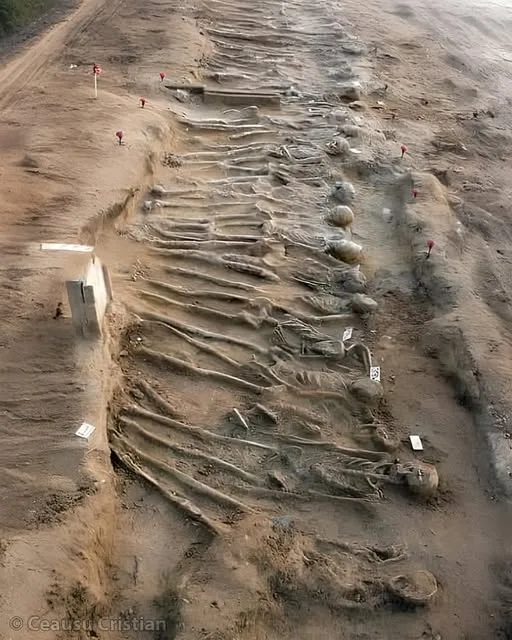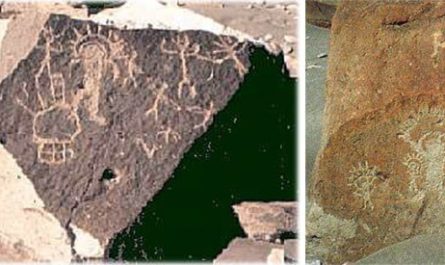In the sunlit soils of Sicily, near the modern city of Palermo, lie the silent remains of Greek warriors who fought in the Battle of Himera in 480 BCE. This pivotal clash, fought on the same day as the Battle of Salamis, saw Greek forces from Syracuse and Akragas triumph over a formidable Carthaginian army. The victory not only secured Greek dominance in the Mediterranean but also shaped the cultural and historical trajectory of Sicily for centuries. Recent archaeological discoveries have illuminated the battle’s significance, revealing the diverse origins of the fighters and challenging ancient narratives. Let’s delve into the details of this monumental event and its enduring legacy.
The Historical Context
The Battle of Himera was a critical episode in the Sicilian Wars, a series of conflicts between Greek city-states and Carthage for control of Sicily. By 483 BCE, Gelon, the tyrant of Syracuse, and Theron, the tyrant of Akragas, had formed a powerful alliance through marriage, consolidating Greek power in eastern and southern Sicily. Their expansionist ambitions threatened Carthage’s western holdings, particularly when Theron deposed Terillus, the tyrant of Himera, a city aligned with Carthage. Terillus sought aid from Hamilcar the Magonid, a prominent Carthaginian leader, who launched an expedition to restore him, setting the stage for the 480 BCE conflict.
Ancient sources, including Herodotus and Diodorus Siculus, claim the battle coincided with either the Battle of Salamis or Thermopylae, linking it to the broader Greco-Persian Wars. While modern scholars dismiss the idea of a coordinated Punic-Persian conspiracy, the timing underscores the global stakes of 480 BCE, as Greek city-states faced existential threats from both Carthage in the west and Persia in the east.

The Battle Unfolded
Hamilcar’s army, estimated at 50,000 by modern scholars (though ancient sources inflate this to 300,000), included Phoenicians, Libyans, Iberians, and other mercenaries. A storm sank many of his transport ships, depriving him of chariots and most cavalry, a critical disadvantage. Hamilcar established two camps: one by the sea for his navy and another on a hill west of Himera, connected by a palisade.
Gelon, leading a force of about 50,000 infantry and 5,000 cavalry, arrived to relieve Theron’s besieged troops in Himera. His cavalry captured Carthaginian foragers, weakening their supply lines. A pivotal moment came when Gelon intercepted a message from Hamilcar requesting cavalry from Selinus, a Carthaginian ally. In a brilliant ruse, Gelon disguised his own cavalry as Selinuntine reinforcements, infiltrating Hamilcar’s naval camp at dawn. The Greeks attacked, setting the camp ablaze and killing Hamilcar, who, according to Herodotus, died in a sacrificial pyre. The Carthaginian forces collapsed, suffering heavy losses—Diodorus claims 150,000 were killed, though this is likely exaggerated. The Greeks took no prisoners, and only a handful of Carthaginians escaped, many perishing in a subsequent storm.
The victory was decisive. Carthage’s power in Sicily was crippled for seven decades, and Syracuse emerged as the dominant Greek city-state in the Mediterranean. Gelon commemorated the triumph with a monument at Delphi and minted silver decadrachms, influencing even Carthaginian iconography.
Archaeological Revelations
Excavations since 2007, led by archaeologist Stefano Vassallo, have uncovered mass graves in Himera’s western necropolis, confirming the battle’s location near the city’s western walls. Seven mass graves from 480 BCE contain dozens of male skeletons, many showing signs of violent trauma, such as a spearblade embedded in one warrior’s side. The graves’ proximity to the battlefield suggests they hold Greek allies from Syracuse and Akragas, as defeated Carthaginians were unlikely to receive such respectful burials, and local Himerans would have been buried by families.
Isotopic and DNA analyses have revealed a surprising twist: only about one-third of the 480 BCE soldiers were local to Sicily. The rest were non-Greek mercenaries from regions as far as the Baltic, Ukraine, and Thrace. This contradicts ancient accounts by Herodotus and Diodorus, who emphasized Greek heroism and omitted the role of foreign fighters, likely to craft a Hellenic-centric narrative. These mercenaries, hired by wealthy tyrants like Gelon, were buried respectfully but impersonally, reflecting their outsider status. The presence of 18 horse burials, some with bronze harness rings, further underscores the battle’s intensity and the Greeks’ reliance on cavalry.
In contrast, graves from the Second Battle of Himera in 409 BCE, when Carthage destroyed the city, show three-fourths of the soldiers were local, supporting claims that Himera fought alone. These findings highlight the diverse, cosmopolitan nature of ancient warfare and challenge the ethnocentric biases of Greek historians.
Legacy and Significance
The Battle of Himera was more than a military triumph; it was a cultural milestone. The Greek victory secured Syracuse’s hegemony in Sicily for over 70 years, fostering prosperity and cultural flourishing. Temples built at Himera, Syracuse, and Akragas, including the Temple of Victory at Himera constructed by defeated Carthaginians, celebrated the achievement. Gelon’s monument at Delphi broadcast the victory to the Greek world, equating it with triumphs at Salamis and Plataea.
The battle’s narrative was woven into Greek identity, with ancient historians linking it to the Persian Wars to emphasize Hellenic resilience. However, the archaeological evidence reveals a more complex story, where mercenaries from distant lands played a crucial role, a fact downplayed by Greek sources to maintain a heroic ideal of citizen-soldiers.
Today, the remains of Himera’s warriors, stored in Palermo’s Royal Albergo dei Poveri, await a permanent museum in Termini Imerese. These bones tell a story of bravery, diversity, and strategic brilliance, reminding us that history is often more nuanced than the tales told by victors.
Conclusion
The Battle of Himera stands as a testament to the resilience and ingenuity of the Sicilian Greeks, whose victory over Carthage in 480 BCE reshaped the Mediterranean. Archaeological discoveries have enriched our understanding, revealing the critical role of foreign mercenaries and challenging ancient narratives. As we unearth these ancient bones, we uncover not just the past but the complex interplay of cultures that defined it. The warriors of Himera, Greek and non-Greek alike, fought for a future that still echoes in Sicily’s storied landscape.





